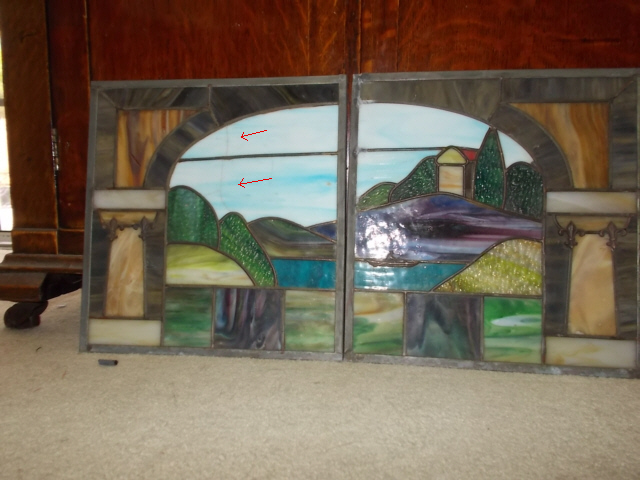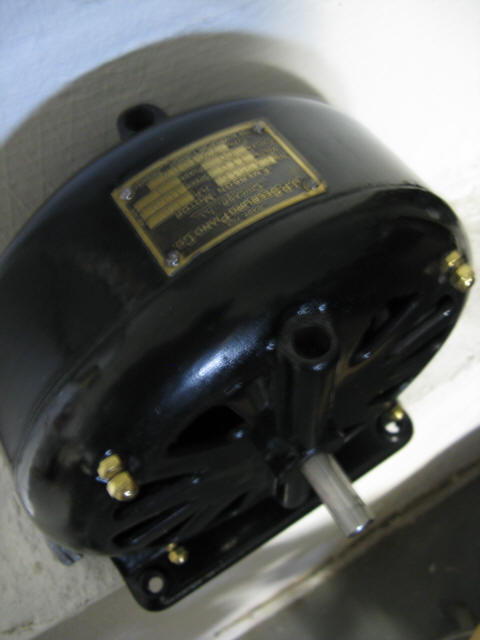



This is a 1922 Seeburg Model "L" or Lilliputian Nickelodeon. It was converted at some point to accept dimes only.
This piano was obtained from Dana Johnson on the west coast, with the help of Don Teach, having been purchased at the estate sale of Bud Hurlbut in April 2012.
Bud the creator of a number of amusement attractions.
So far it's a mystery exactly where this piano spent a large part of it's performing life, Update -SOLVED! (2020)
Chris Jepsen , Assistant Archivist
found the following photo, which clearly shows this Nickelodeon at the dock area near the Knott's Berry Farm Steamboat

The glass reads on the left as seen in the page start STEAMBOAT , the missing right glass reads MUSIC
Below the coin slot is the 10c installed sign.


I believe this to be an earlier photo showing the back of the piano on the dock without the protective cabinet
To learn more about Bud Hurlbut and his connection to Knott's Berry Farm
This link will take you to tribute page created by Chris Jepsen - www.yesterland.com/budhurlbut.html
Nickelodeons can have more than one instrument installed, the Seeburg "L" has one additional besides the piano a Mandolin.
When activated by the music roll selection it causes a bar to move individual metal tabs on leather between the hammers and the strings
The Mandolin attachment on this Nickelodeon is marked as being rebuilt in March 1980
This indicates the piano was most likely on stage at least until sometime after March 1980
If anyone out there reading this has any information about this piano please contact me.

This photo shows this Seeburg Nickelodeon (circled in yellow) at the Bud Hurlbut estate auction .
Restoration of the piano has begun, photos will follow, it has been a long road and is not yet completed as I write this.
Given it's condition, it received a lot of use in it's long life
Email me here:


Click on above for information on the Seeburg "L" Nickelodeon
It Begins
A set of original art glass windows, missing above in the first photo, were found by Dana Johnson and supplied with the piano when purchased.
Though some pieces of glass were cracked, it was all there including the casting of the man in the boat on the right side.
I had to decide to leave them alone as found or attempt to restore them myself or find someone else who could.
The glass was sent to Drehobl Bros in Chicago for them to restore. Drehobl Bros are the original manufacturers of the glass used in Seeburg pianos.
They are still in business! and were able to replace the damaged glass pieces and restore the windows.

Here a few of the easier seen cracks are shown in the windows as received, when back lighted more cracks are view able.
No two sets of these windows are exactly alike because of differences in the glass itself, so the restored windows are slightly different.
Later the restored windows will be shown in the restored cabinet.


Here, some cabinet close-ups, the added 10c sign can be seen in the Knott's Berry Farm Location photo above.
The cherubs were removed from the cabinet (carefully) , restored and reinstalled


Coin entry chute (with added plate for 10c) and photo showing burning on door edge


These photos show some of the cabinet damage it has sustained over the years.

Here, a pattern to be used to cut replacement veneer is being made (one of many)
This transferred to a piece of grain matching veneer and cut out to fit the damaged area.

Here the cabinet has been stripped ,lightly sanded and all repairs made, including veneer, it's ready for finish

Next
PIANO REPAIRS
The piano action, the first major part of the piano to be restored, completely rebuilt, including a repair to one mounting casting, by Richard Bair.

The action was installed back in the cabinet here and the new hammers aligned with the strings;
The mandolin rail has also been restored, by me and installed in the cabinet, the top wood with the tabs
When in the activated position, by the music roll, those metal tabs are placed between the hammers and the strings adding a unique sound while playing
The Seeburg "L" uses "A" rolls
The holes in style "A" music rolls ,
which pass over the tracker bar and control the piano's actions are
defined as following, from left to right are:
1 Hammer rail soft
2 Sustain Pedal
3 play (tells mechanism to stop rewind)
4 through 61 Playing Notes C to A
62 Extra instrument
63 Rewind
64 Mandolin ON
65 Coin Trip (off)
New leather cloth, and tabs, were used to restore the mandolin rail. I used the method John Tuttle uses, see his video (youtube)

This photo shows the registration of the hammers on the leather, The leather is placed between the hammers and strings.
Chalk was placed on the hammers, then each hammer struck the leather into the string.
Those marks used to cut the leather and position metal tabs
A line drawn and a punch located the end or each cut.
The motor in the cabinet was not the correct one, I located a Seeburg / Emerson pancake motor which I restored.
This is the correct motor that was in the piano when it was built.

This photo shows the replacement pancake motor disassembled, during it's restoration


Here is the finished, tested motor
Though not view able in these photos, one of the oil caps was not complete (missing it's top).
It took a lot of searching but I finally found a pair on a vintage Emerson washing machine motor.
Those not familiar with how a vintage player piano works, this motor is connected to a vacuum pump.
The vacuum created by the pump is used to operate the moving parts of the piano.
In this version of the Seeburg "L" it has a scissor style vacuum pump which has been restored, a photo will be posted soon,
Here it is:

Getting closer, additional photos soon
The Seeburg "L" uses "A" music rolls (generally 10 songs on each roll)
The holes in style "A" music rolls ,
which pass over the tracker bar and control the piano's actions are
defined as following, from left to right are:
# 1 Hammer Rail Soft
# 2 Sustain Pedal
# 3 Play (this tells mechanism to stop
rewind)
# 4 Through #61 Playing Notes C
to A
#62 Extra Instrument (Not Used on
Seeburg "L')
#63 Rewind
#64 Mandolin ON
#65 Coin Trip (off)